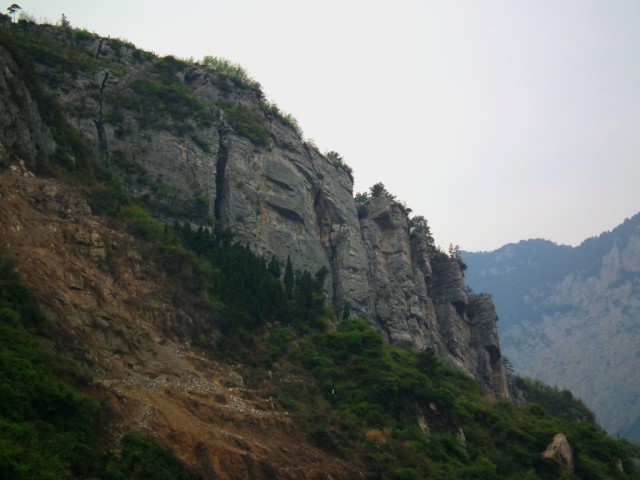9 April 2012
Chain Cliff deforming rock mass on the banks of Three Gorges reservoir
Posted by Dave Petley
As a part of my visit to China Three Gorges University, my hosts took me up the lower reaches of the Three Gorges reservoir to look at some of the large landslides that have occurred in and around the gorge. This is truly a landslide treasure trove, set in quite remarkable scenery. One of the sites that we visited is known as Lianziya, in English as Chain Cliff. As a result of coal mining activity at the toe well before the construction of the dam, this large limestone massif showed signs of active movement, with a big series of tension cracks widening with time. Measurement suggested that a block with a volume of 3.3 million cubic metres was slipping as a resulting of plastic deformation in the thin shale and coal seams beneath the limestone.
There was real concern about the possibility of a catastrophic collapse, which would have been both a hazard in itself and would have potentially blocked the river. Over 30 tension cracks were observed, with widths of up to two metres, and monitoring suggested that creep was continuing to develop. This image shows the limestone blocks and the tension cracks:
This mass was subsequently stabilised by supporting the toe, primarily by back-filling the old mine workings. The project was apparently successful, with no signs of movement even during impoundment of the reservoir.
In the foreground of the above image you can probably see the debris zone from a much smaller, very recent rockfall from the limestone massif. That will be the subject of my next post in this series.



 Dave Petley is the Vice-Chancellor of the University of Hull in the United Kingdom. His blog provides commentary and analysis of landslide events occurring worldwide, including the landslides themselves, latest research, and conferences and meetings.
Dave Petley is the Vice-Chancellor of the University of Hull in the United Kingdom. His blog provides commentary and analysis of landslide events occurring worldwide, including the landslides themselves, latest research, and conferences and meetings.
[…] I posted several images from my recent visit to China Three Gorges University, and in particular on landslides on the banks of the reservoir associated with the Three Gorges Dam. Interestingly, last week, whilst I was on vacation, a […]